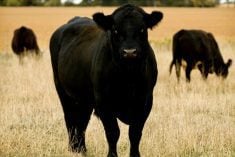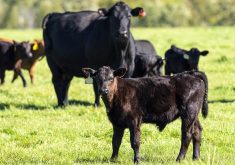To Shirley Bartz, getting students involved with agriculture is one of the most important things she does.
“It is extremely important to have kids aware of and active in and kind of personally invested in the ranching process,” Bartz says.
Bartz is the education co-ordinator for the Prairie Conservation Action Plan and helps operate their Adopt a Rancher program.
Read Also

The Canadian Cattle Association’s international advocacy efforts
Global ag policies affect Canadian food policy, so the Canadian Cattle Association participates in international and domestic forums
Adopt a Rancher started in 2014-15 and is intended for 10th grade classes across Saskatchewan to learn about sustainable ranching practices, although it only became available province-wide in 2019.
To start the program, Bartz meets with ranchers interested in being involved to discuss safety concerns and take photos of the ranch for the class’s coursework. The producer also fills out a rancher profile document.
When the Grade 10 “Sustainability of Ecosystems Science” unit is taught, Bartz supplies the teacher with additional material to supplement the unit, as well as the photos from the ranch and the details provided by the rancher about their operation. Students pick a project, and when the class goes for a ranch tour, they collect data to complete their project.
The program also looks at the sustainability of ranching.
“It’s really important to get our children involved in not just conservation of native prairie, but in understanding and kind of personally invested in the continuation of the ranching practice, which is basically the only thing that is keeping native prairie alive and functioning,” Bartz says.

The ranchers involved with this project teach students about sustainable practices, such as rotational grazing. They show students how cattle benefit soil health, as well as the importance of the native grasslands for carbon sequestration.
“What they would probably call ‘reading the land’ is what I see as science,” Bartz says. “They’re evaluating what they see. And they are making decisions based on visual signs of the health of the grassland … it’s actually really important for the kids to understand that science is not an inaccessible, hard-to-understand academic thing. It is simply a matter of collecting information to answer a question, and then figuring out what you think you’re seeing, and making a change.”
Bartz says the highlight of the program is usually the field trip, where the teacher takes the class to the rancher’s operation, where students can see firsthand what ranchers do on their land.
“It’s very different to get out on the land and speak with somebody who has for generations been living and working in the grasslands, with their cattle and their horse and their dog and their family,” she says. “There’s a value in that that children inherently recognize. There’s a wisdom and there is a science.”
Nicole Anderson is a science teacher from Miller Comprehensive High School in Regina, Sask. She became involved with the Adopt a Rancher program from the very beginning, when Prairie Conservation Action Plan brought pamphlets advertising the program, and Anderson decided to use it.
Now, she’s been involved with the program for almost 10 years, with no plans to stop. Anderson says she likes the program because it’s flexible and easily adapted.
“For the last couple years, I’ve kind of taken that booklet and made it my own, so I’ve included some more Indigenous knowledge and Indigenous use of land and worldviews and just kind of made it fit my style,” Anderson says.

As a teacher working in the heart of the city, Anderson says this program is important to connect students in an urban centre with the land.
The urban and rural divide, people’s growing disconnect from the family farm, and how to close the gap is frequently talked about in agricultural spheres. Adopt a Rancher might just be one way to bridge the gap.
“Many students do not get the opportunity to leave the city or even know about where their food comes from,” Anderson says. “So seeing a ranch and seeing how cattle in this instant are raised and why they’re raised that way is huge, especially with so much media talking about grass-fed beef versus feedlot beef … I also like how we go out there so they actually get to spend a day outside, which is unfortunately rare in high schools.”
Adopt a Rancher is now available in French as well.

















